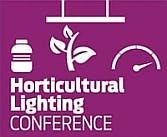With the appropriate components in a system design, we can:
- Reduce luminaire maintenance with LEDs
- Reduce energy costs with LEDs
- Place luminaires closer to plants with less damage/risk
- Control spectral content and adjust it to match plant needs more closely
Tero outlines two camps when it comes to designing luminaires for horticultural operations:
- The first camp believes that you don’t need optics in your design because they can reduce the overall efficacy of the luminaire due to losses. (Not inaccurate but not necessarily a concern when you consider the tradeoffs in this particular operation.)
- The second camp says that you can maximize the usage of the light by incorporating the appropriate optics for the intended application. (In other words, think like a plant. How much light do you need to absorb? What characteristics are you intending to encourage in the growing crop?)
Obviously, our speaker is in the second camp. 😊
As he notes, optics define where the light is going. If the optics are aiming light in the wrong place or you’re not using them at all, then light is being wasted, causing light pollution and unnecessary energy consumption.
Tero also poses some design questions to ask during the product development or specification process:
- Are photons going where they are consumed?
- What is the required distance between luminaires?
- What is the required distance between luminaires and plants?
Optical components can be the key to resolving these questions and challenges in the horticultural lighting project.
An interesting point is that beam angles can influence the PPFD (photosynthetic photon flux density) and determine how far the luminaires should be spaced from each other and from the plants themselves (or even how close they can get, for example, by using vertical lighting and interlighting to reach the parts of plants that do not receive light from directly above the canopy). Optics can produce wide or narrow beam distributions for a different amount of light penetration into the foliage; or asymmetric distributions can be used to illuminate vertically or off-axis to allow horticultural luminaires to be installed in the ceiling/roof infrastructure while still distributing light to the lower parts of plants.
According to Tero’s design premises, when light is focused as needed on the plants, you will either get greater crop yield and shorter growing cycles or you will reduce the bill of materials costs of the luminaire. Either way, the result is a better return on investment in LED-based horticultural lighting.
More horticultural lighting science, application, and design information
Understand energy efficiency of LED horticultural lighting systems
Science advances in matching LED lighting to horticultural needs
Horticultural Lighting Conference chronicles LED impact on food supply
LED efficacy, UV, and plant feedback highlight horticulture presentations







